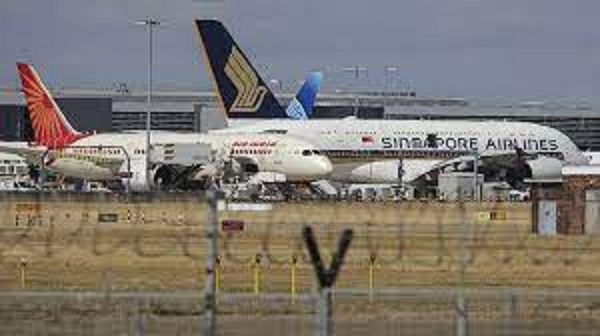Istanbul: India has the right vision and well-timed strategy for the aviation sector, especially with good economic growth and high population, but it should also be ensured that the positive impact is not curtailed by too many taxes, according to IATA.
Marie Owens Thomsen, the Chief Economist at the International Air Transport Association (IATA), also said that she is not in favour of any kind of duopoly in the airline industry and emphasised the importance of healthy competition as well as participants being resilient.
She shared her views on competition in response to a question from PTI on the possibility of duopoly in the fast growing Indian airlines market.
While the domestic traffic is on the rise, the airlines segment is facing headwinds with Go First suspending operations and SpiceJet grappling with various issues, while IndiGo and Air India group are expanding their presence. Akasa Air, which is on a steady path, is less than a year old.
“I am an economist and obviously, I am not going to be in favour of any kind of duopoly. We want to see, in general economics, intense competition because we believe that will get more innovation, services and lower prices.
“On the other hand, if the field is too crowded and there is too much capacity, then you might end up with too many players that are not financially viable. Healthy competition as well as robust and resilient participants, that is what we want,” she said.
In an interview on the sidelines of the IATA World Air Transport Summit in Istanbul earlier this week, Thomsen said the two fundamental drivers for air transportation are GDP and population growth, and on both fronts, India is doing well.
While acknowledging that the country’s strategy of having more airports and aeroplanes is well-timed, she also has a word of caution.
“I love the aviation strategy, more airports, more aeroplanes and all of that seems well-timed and I would also caution India to try to make sure that they don’t curtail the results that could come from that by imposing too many taxes and burdensome regulations.
“… So far, we know that India has not quite been able to access that Tiger style growth that we would have hoped for,” she pointed out.
Thomsen is the Senior Vice President Sustainability & Chief Economist at IATA, a grouping of more than 300 airlines that account for over 80 per cent of the global air traffic. Various Indian carriers, including Air India, IndiGo and SpiceJet, are members of IATA.
About the Indian market, she also said the right vision is there but it is execution that they need to pay attention to. “You can have the right policies and then curtail the positive impact of those policies if not careful”.
Earlier this week, Civil Aviation Minister Jyotiraditya Scindia said the country will have more than 200 airports, heliports and water aerodromes in the next five years and domestic carriers will order up to 1,400 additional planes during the same period.
In February, aircraft maker Boeing said that India will require around 2,210 new planes in the next two decades and projected a nearly 7 per cent annual domestic air traffic growth through 2041.
To a query on concerns about low airfares and high taxes, Thomsen said it is actually not just an Indian problem.
“The world seems inexplicably tempted to always put more taxes on airlines in particular. It is a mystery to me because it is not part of the value chain that is the most profitable. On the contrary, structurally speaking, the airlines are the ones that make the least money in our value chain,” she said.
On June 5, IATA projected the global airlines industry to record revenues of USD 803 billion and a net profit of USD 9.8 billion this year, and airlines will make an average profit of USD 2.25 per passenger.







